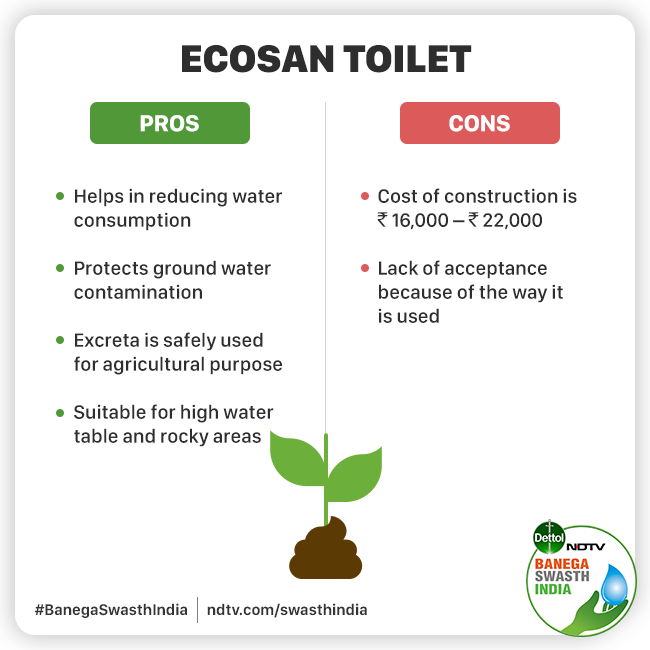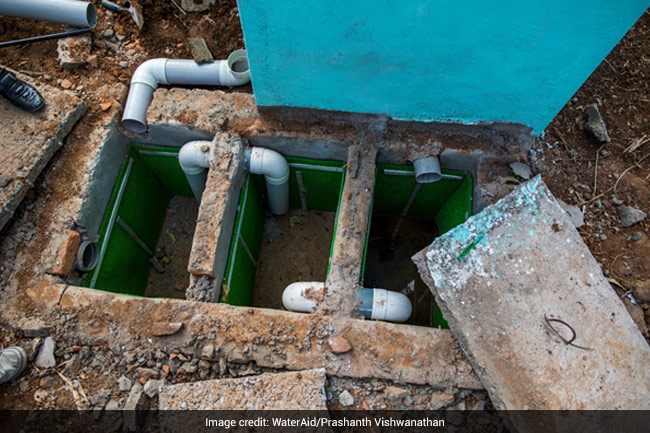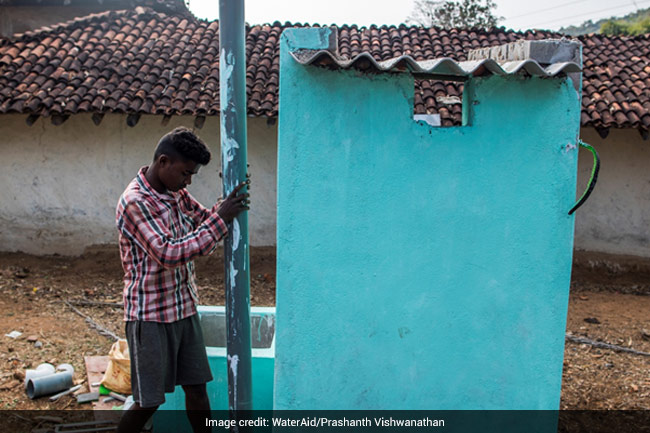Highlights
- World Toilet Day 2020 promotes sustainable sanitation and climate change
- Ecosan toilet and bio toilet both are sustainable and environment friendly
- Both toilet technologies can be adopted in rocky terrain and high water tab
New Delhi: A decade ago, in Hirmatkala village in Mewat, Haryana, a young girl was kidnapped by two bikers while she was out, searching for a secluded place to relieve herself. In 2014, two teenage girls, 14 and 16 year old, left their homes in the village of Katra in Uttar Pradesh, to defecate in some hidden corner of a random field. The two girls were gang raped, killed, and hanged from a tree. Their fault was nothing but they stepped out to answer nature’s call. The lack of availability of toilet and practice of open defecation not only invites water borne diseases like cholera, typhoid, and vector borne diseases but puts an individual’s privacy at risk.
A couple of years ago, Chetibai Kodopi, a resident of Sonpur village in Kanker district in Chhattisgarh, attended a few discussions organised by NGO WaterAid India and its partners. Chetibai Kodopoi, a mother of 20-year-old, learned about the importance of having an individual household toilet especially for her daughter who would walk to the interiors of the jungle at odd hours. Keeping the privacy of her daughter in mind, Chetibai Kodopi decided to construct a toilet at home.
Also Read: World Toilet Day 2020: All You Need To Know About The Theme And Significance
The process of construction began with digging the ground to construct a septic tank. When the hole was dug, huge amount of water seeped through the ground, making the soil moist. This implies, groundwater table in the region was high which means constructing a pit to collect waste would lead to groundwater contamination. To overcome this problem, Chetibai opted for ecosan or ecological sanitation toilet.
When the groundwater table is high, there are high chances of water seeping into the pits dug for waste collection. Under such cases, twin pit toilets, much recommended toilet technology for waste management fails. The only option is to construct the pit with some modifications or switch to other viable technologies, says Raman VR, Head of Policy at WaterAid India.
Also Read: Swachh Bharat Abhiyan: What Are Twin Pit Toilets?
Here are two solutions for toilet construction in areas with high water table areas, rocky terrain, water scarcity zones and flood prone areas.
Ecosan Toilet
Ecosan toilet or ecological sanitation toilet is a cost-effective toilet technology that operates on the concept of treating human waste for agricultural purposes with less water, electricity and without a sewage treatment system. There are majorly two kinds of technologies under Ecosan – Dry toilet and Urine Diverting Dry Toilet.
Dry Toilet – A dry toilet operates without flush water and can be put into use where people don’t use water for anal cleaning. There are two pits which further have two holes, one for urine and other for faeces, with a pedestal or squat pan over them. A user has to shift from one pit to another, as and when required and ash is put over faeces after each use. Both urine and faecal matter are collected and used separately. The holes are closed with lids to prevent rodents from entering the toilet chamber.
According to Chetibai Kodopi, there is hardly any odour or other difficulties in using the toilet.
Also Read: Promoted Under The Swachh Bharat Abhiyan, A User Assesses The ‘Twin Pit’ Toilet Technology
Urine-Diverting Dry Toilet – A regular Ecosan toilet has two chambers, each used alternatively for a period of one year. A chamber is further divided into three sections, one each for urine, faeces, and anal cleansing water. Excreta and waste water is collected in sealed chambers to be used as farm manure.
In both the technologies, entire structure, including faecal matter containment tanks is constructed above the ground. Pit is only for faecal matter; water used for cleaning and urine is collected in drum type containers. The urine collected is stored for a period of one month and then it is diluted with water in 1:10 ratio. After which it is good to be taken to the fields and used as fertiliser. Water used for cleaning can be sent to the ground and human waste can be left for six months for degradation and then used for agriculture purposes, says Anurag Gupta, Regional Manager, East, WaterAid.
The cost of constructing an ecosan toilet is somewhere between Rs. 16,000 to 22,000. Of course, toilet technology saves water, protects ground water contamination, recycle waste and valuable nutrients, but the problem is people don’t accept it because of the way it is used.
Bio Toilet
Bio toilet technology is suitable for all terrains and topography, especially rocky, high water table and flood prone areas. Explaining the structure of the bio-toilet and how it works, Nikita Vaz, WASH specialist, says,
The waste from the toilet goes to a tank fitted inside a pit underground. The tank has three chambers and 30 per cent of each tank should be filled with bio media which is inoculum bacteria. The inner layer of all the three compartments is covered with artificial grass to aid bacteria in creating its colony. From the toilet, the fecal matter goes into the first compartment of the tank. While the inoculum bacteria work on the waste, slowly and gradually excreta flow from one chamber to another. By the time the waste reaches the last section in the tank, the bacteria has already digested it and converted it into compost and gases like methane and carbon dioxide.
Since the bacteria digests all the waste, desludging of bio-digester is not required. While the compost can be taken out, the gases can either be released in the environment or to generate bio-fuel which further can be used for lighting lamps or in the kitchen.
The generated gas can be converted into any other form of energy. To convert biogas into fuel, you need a bio gas plant which will raise the cost of the technology. The vent pipe needs to be connected to the biogas plant, says Ms Vaz.
The biogas toilet technology is on the expensive end as the tank itself costs Rs. 1 lakh and the cost will vary depending on the number of users, hence the entire cost of constructing a bio toilet (is connected with biogas plant) is around Rs. 1.5 lakh.
Note: In hard rock areas, the tank needs to be constructed above the ground level.
Watch: On World Toilet Day Meet The International Toilet Warriors, Jack Sim And Mark Balla
NDTV – Dettol Banega Swasth India campaign is an extension of the five-year-old Banega Swachh India initiative helmed by Campaign Ambassador Amitabh Bachchan. It aims to spread awareness about critical health issues facing the country. In wake of the current COVID-19 pandemic, the need for WASH (Water, Sanitation and Hygiene) is reaffirmed as handwashing is one of the ways to prevent Coronavirus infection and other diseases. The campaign highlights the importance of nutrition and healthcare for women and children to prevent maternal and child mortality, fight malnutrition, stunting, wasting, anaemia and disease prevention through vaccines. Importance of programmes like Public Distribution System (PDS), Mid-day Meal Scheme, POSHAN Abhiyan and the role of Aganwadis and ASHA workers are also covered. Only a Swachh or clean India where toilets are used and open defecation free (ODF) status achieved as part of the Swachh Bharat Abhiyan launched by Prime Minister Narendra Modi in 2014, can eradicate diseases like diahorrea and become a Swasth or healthy India. The campaign will continue to cover issues like air pollution, waste management, plastic ban, manual scavenging and sanitation workers and menstrual hygiene.
[corona_data_new]

































